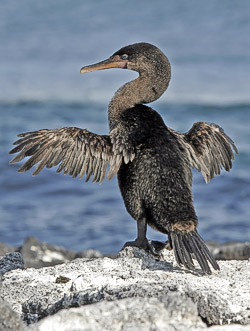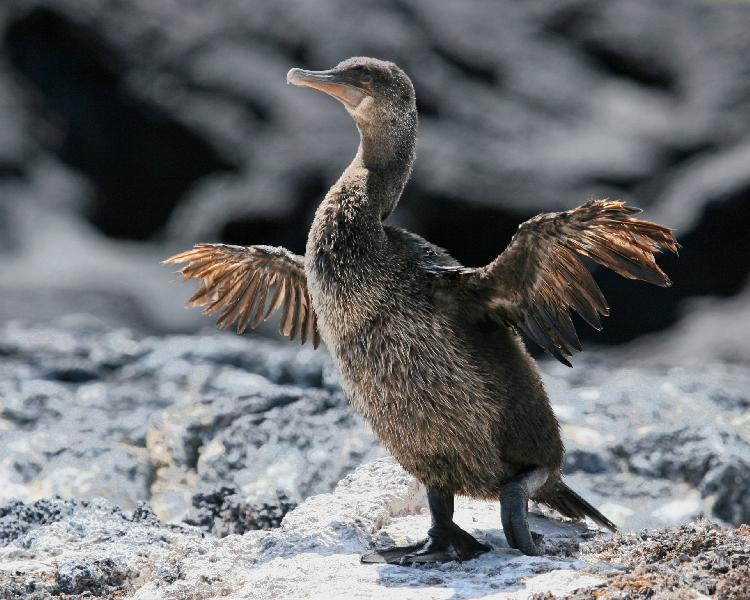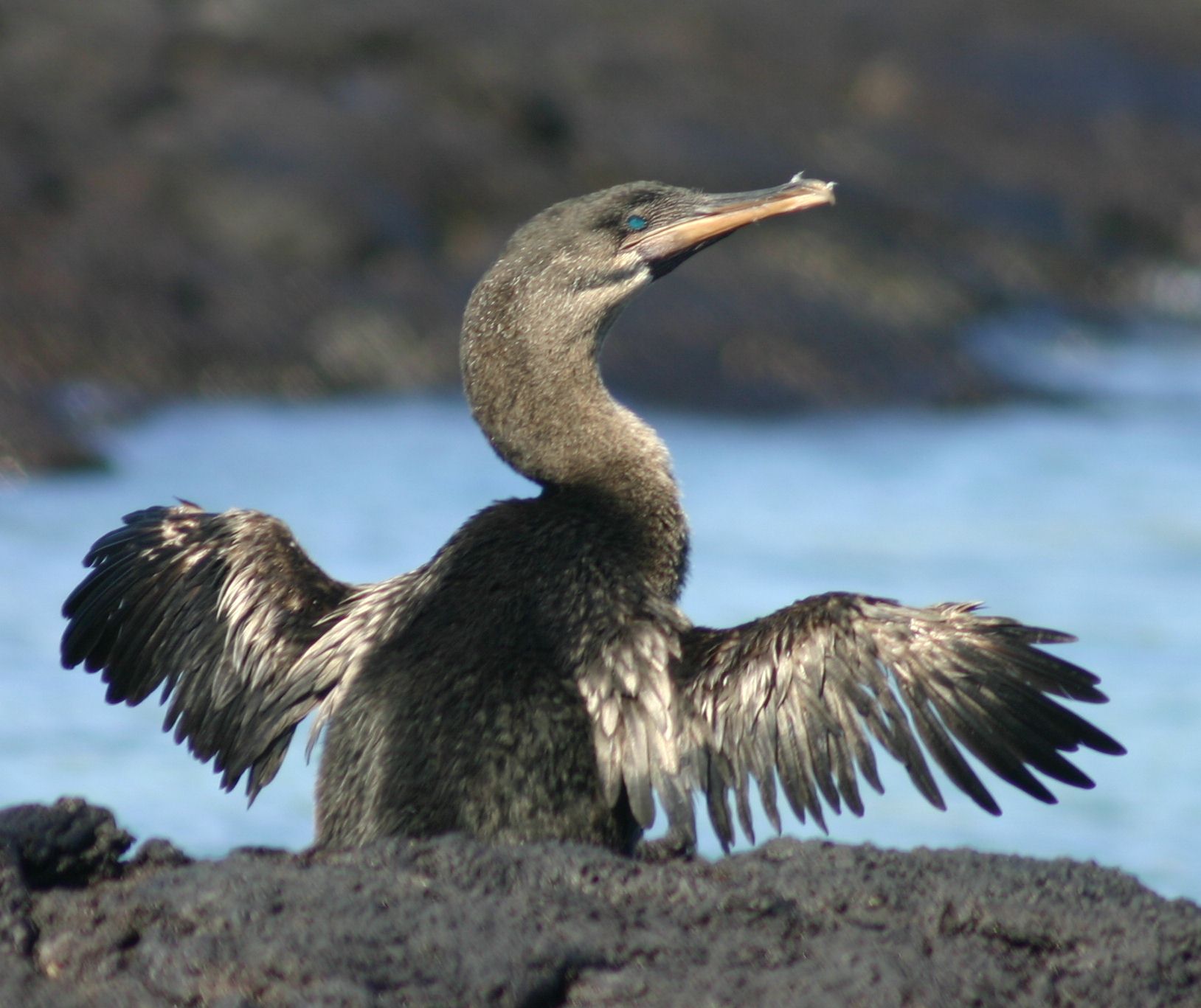
Nannopterum harrisi
TAXONOMY
Phalacrocorax harrisi Rothschild, 1898, Narborough Island,
Galapagos Archipelago. Monotypic.
OTHER COMMON NAMES
English: Flightless cormorant; French: Cormoran aptиre; German:
Galapagosscharbe; Spanish: Cormorбn Mancуn.
PHYSICAL CHARACTERISTICS
Body length 36–39 in (91–99 cm), with short, stubby, raggedappearing
wings, an almost all-black plumage, black legs and
feet, and a pinkish throat pouch.
DISTRIBUTION
An endemic (or local) species of the Galapagos Islands in the
Pacific Ocean off equatorial South America.
HABITAT
Occurs in nearshore coastal waters.
BEHAVIOR
A flightless species that roosts on rocks during the night and
rarely wanders far from the place where born.
FEEDING ECOLOGY AND DIET
Catches its prey of fish, squid, and crustaceans by an agile underwater
pursuit.
REPRODUCTIVE BIOLOGY
Lays two to three eggs on a rocky ledge; both sexes incubate
the eggs (c. 35 days) and care for the young.
CONSERVATION STATUS
An Endangered species subject to severe fluctuations in numbers
in response to El Nino-related marine perturbations, with fewer
than 1,000 breeding pairs surviving at only two breeding sites.
SIGNIFICANCE TO HUMANS
Not of much direct importance to people, but contributes to
local economic benefits through ecotourism associated with
seeing rare birds and other wildlife of the Galapagos Islands.
Photo Gallery of - Galapagos cormorant




 Animalia Life
Animalia Life